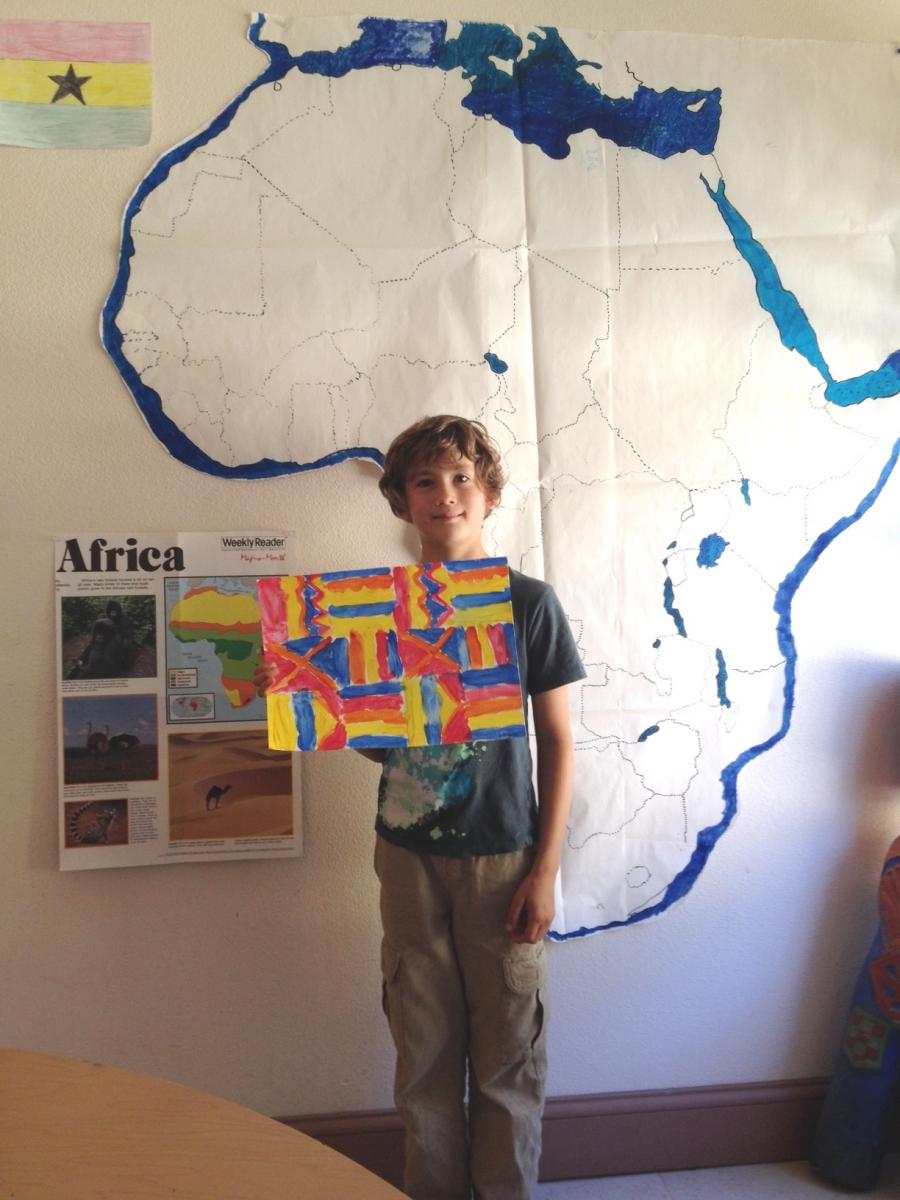 ‘Passengers, please direct your attention out of the plane’s right side windows,’ said enthusiastic ‘flight attendant’ and Mount Madonna School (MMS) first grade teacher Cassia Laffin to her students. ‘In the distance, reaching 19,341 feet you can see Mount Kilimanjaro! And, over there, winding for thousands of miles, the remarkable Nile River! And look there, how fortunate, it’s the Serengeti Migration!’
‘Passengers, please direct your attention out of the plane’s right side windows,’ said enthusiastic ‘flight attendant’ and Mount Madonna School (MMS) first grade teacher Cassia Laffin to her students. ‘In the distance, reaching 19,341 feet you can see Mount Kilimanjaro! And, over there, winding for thousands of miles, the remarkable Nile River! And look there, how fortunate, it’s the Serengeti Migration!’
No ordinary ‘field trip,’ the students were actually snug inside their classroom, imaginations fully engaged and faces lit up with expressions of joy and wonder. They didn’t ‘see’ the familiar outdoor landscape, but instead were transported, if only briefly, on an imaginary flight across the African continent, courtesy of Laffin, who served as their pilot, flight attendant and tour guide while sharing an introduction to Africa’s vibrant cultural and geographic diversity.
Each year, MMS elementary students spend several months of focused study on a particular world culture, or this year, a theme — A Journey Through Africa. Cultural Awareness performances will be held March 26 and 27 in the Community Building at Mount Madonna Center. The reception is at 9:00am and the performance starts at 9:30am.
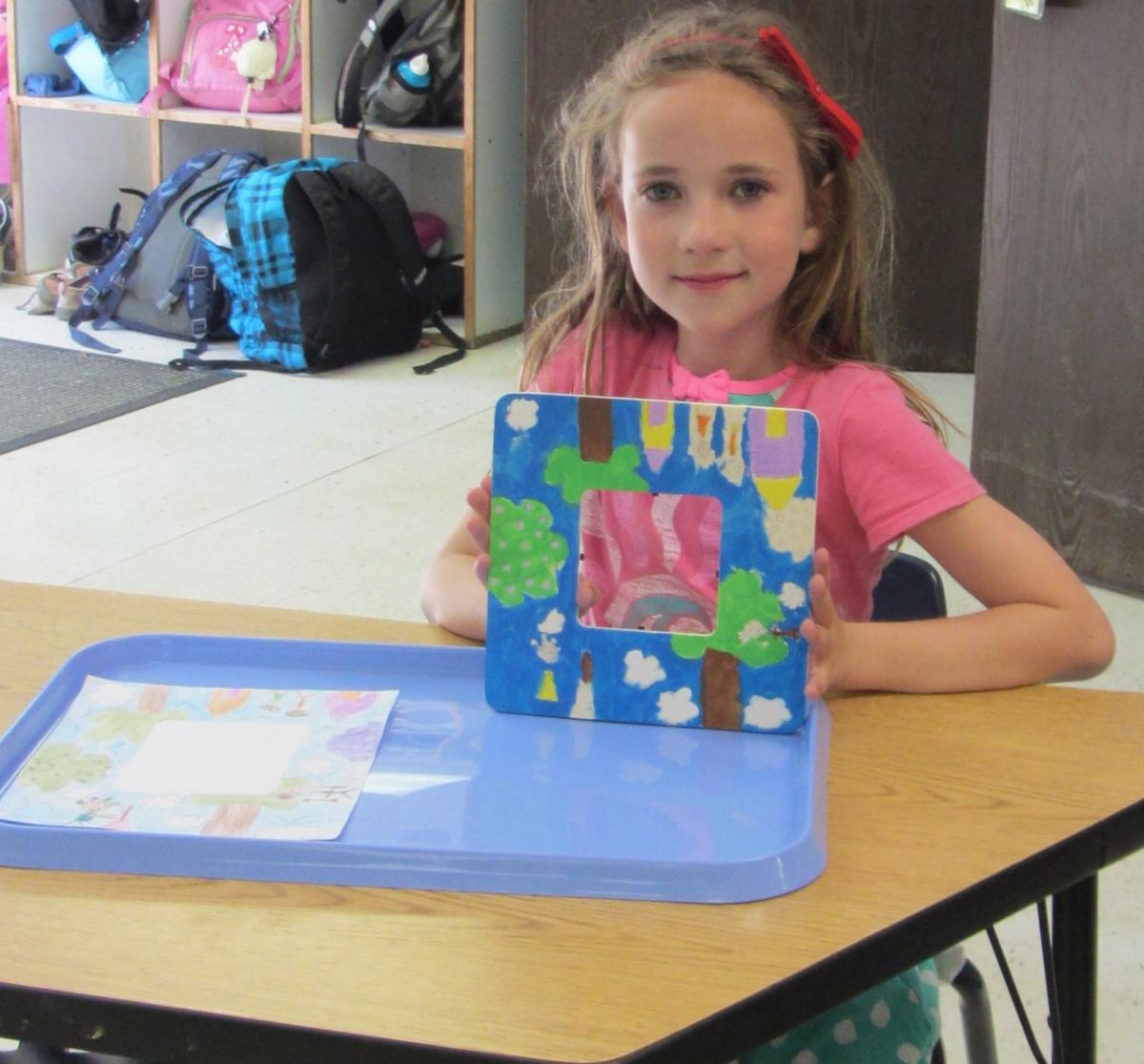 ‘The process of cultural awareness at MMS is one of exploration and learning and I am thrilled that the focus this year is Africa,’ commented professional dancer and elementary dance teacher, Micha Scott.
‘The process of cultural awareness at MMS is one of exploration and learning and I am thrilled that the focus this year is Africa,’ commented professional dancer and elementary dance teacher, Micha Scott.
Scott worked with each of the elementary classes, choreographing dances for them to perform at Cultural Awareness. Elementary music teacher Sarojani Rohan also worked with each class, teaching them traditional songs from the countries they are studying.
‘The diversity of the people, customs, music, dance, food, and animals on the African continent is amazing,’ noted Scott.

 Preschool and kindergarten students focused on Egyptian culture and also dabbled in culture of many African countries, including learning about a traditional Mali art form of mud painting on cloth known as ‘Bogolanfini.’ Students are creating their own art pieces in this style. Together, Pre/K and fifth grade students will open the show with a dance based on one performed by The Egyptian Folk Dance Troupe to the music of ‘El Laila Helwa,’ by Dr. Samy Farag; they will also sing a song of greeting in Arabic. Pre/K students will share how to say ‘hello’ in five African languages.
Preschool and kindergarten students focused on Egyptian culture and also dabbled in culture of many African countries, including learning about a traditional Mali art form of mud painting on cloth known as ‘Bogolanfini.’ Students are creating their own art pieces in this style. Together, Pre/K and fifth grade students will open the show with a dance based on one performed by The Egyptian Folk Dance Troupe to the music of ‘El Laila Helwa,’ by Dr. Samy Farag; they will also sing a song of greeting in Arabic. Pre/K students will share how to say ‘hello’ in five African languages.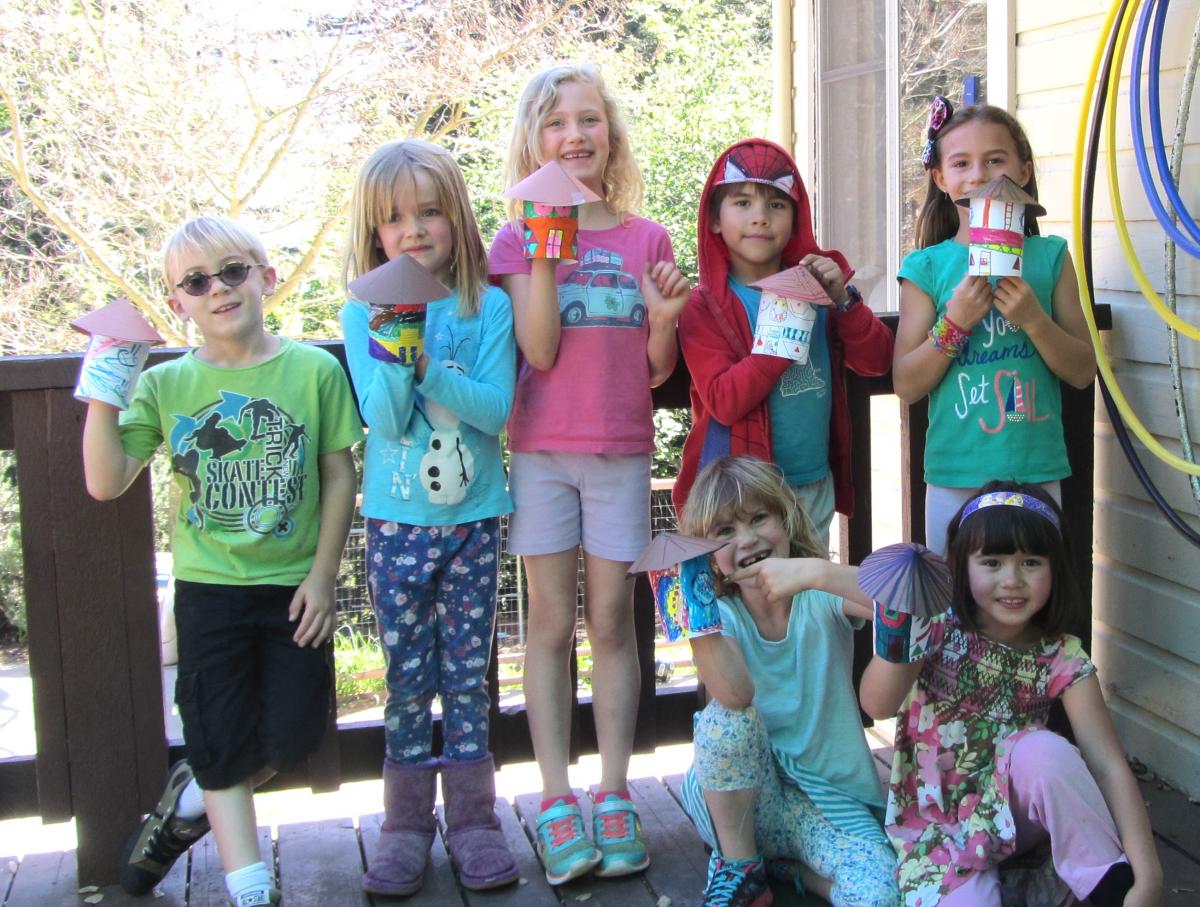 Pre/K students and teachers are also busy creating their own costumes, similar to the West African style of African wax printing, by applying a ‘resist’ to the ‘paint’ designs on cloth and then dying it. Students also created costume accessories, including colorful clay beads.
Pre/K students and teachers are also busy creating their own costumes, similar to the West African style of African wax printing, by applying a ‘resist’ to the ‘paint’ designs on cloth and then dying it. Students also created costume accessories, including colorful clay beads. ‘I want the children to develop an understanding of what it would be like to be a child in Africa, touching on poverty, education and the breadth and richness of their culture,’ commented Laffin. Students are also creating black Sharpie drawings on paper, an homage to the mask works of artist Marcos Roman, as well as cylindrical models of Masai homes and a large, mural backdrop of the African savannah, to which students are adding animals and other elements. Scott choreographed a dance for first grade that is reflective of the Masai.
‘I want the children to develop an understanding of what it would be like to be a child in Africa, touching on poverty, education and the breadth and richness of their culture,’ commented Laffin. Students are also creating black Sharpie drawings on paper, an homage to the mask works of artist Marcos Roman, as well as cylindrical models of Masai homes and a large, mural backdrop of the African savannah, to which students are adding animals and other elements. Scott choreographed a dance for first grade that is reflective of the Masai.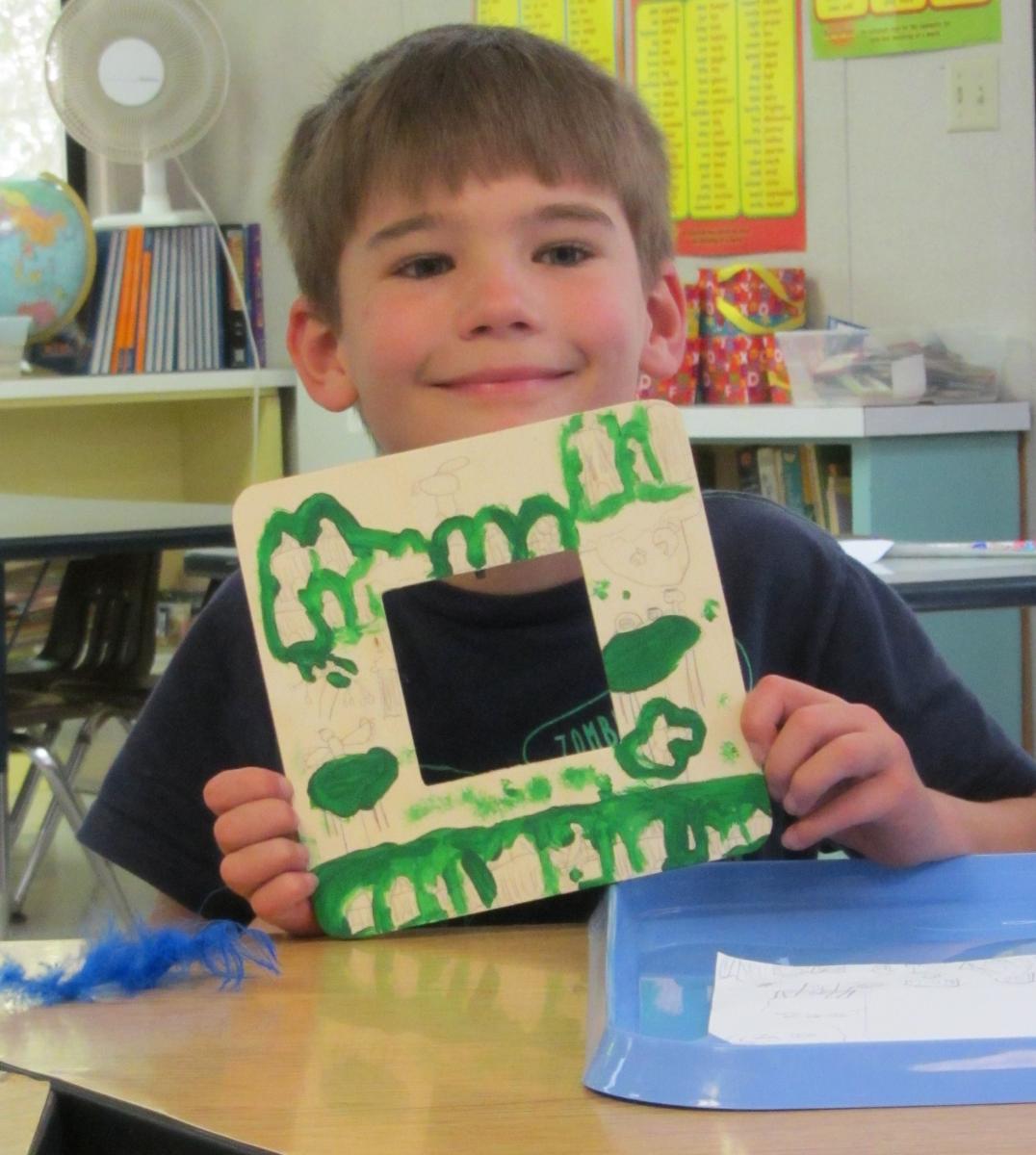 in Africa dance is a common part of life that brings many generations in the community together,’ she continued. ‘Often times in American culture, dance is done in a dance studio with other people of your peer group at an assigned time, or in the privacy of your home with your family or friends. Though they certainly do have studios and training In Africa, dance is generally done in villages and cities in public spaces with the entire community.’
in Africa dance is a common part of life that brings many generations in the community together,’ she continued. ‘Often times in American culture, dance is done in a dance studio with other people of your peer group at an assigned time, or in the privacy of your home with your family or friends. Though they certainly do have studios and training In Africa, dance is generally done in villages and cities in public spaces with the entire community.’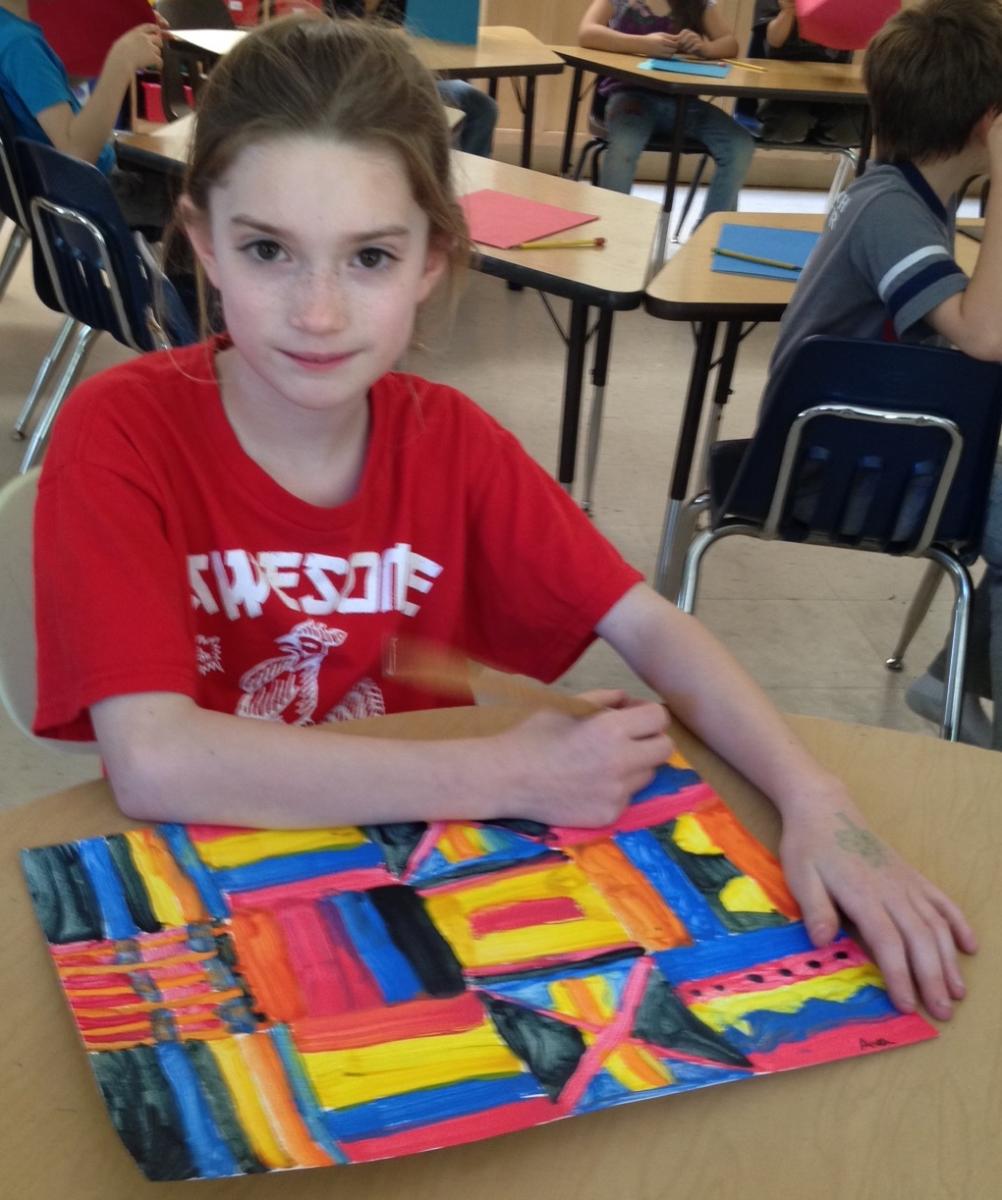 Economics for many Zimbabweans are very difficult, and Leach shared that the class has purchased chickens through Heifer International to help a family in need break the cycle of poverty. They are also writing Zimbabwean animal reports. Their dance choreographed by Scott is based on a royal wedding celebration and is intended to capture the joy of a marriage and how it impacts a community.
Economics for many Zimbabweans are very difficult, and Leach shared that the class has purchased chickens through Heifer International to help a family in need break the cycle of poverty. They are also writing Zimbabwean animal reports. Their dance choreographed by Scott is based on a royal wedding celebration and is intended to capture the joy of a marriage and how it impacts a community. Students will sing a time-honored children’s game song in the Akan language, “Kye Kule.’
Students will sing a time-honored children’s game song in the Akan language, “Kye Kule.’ 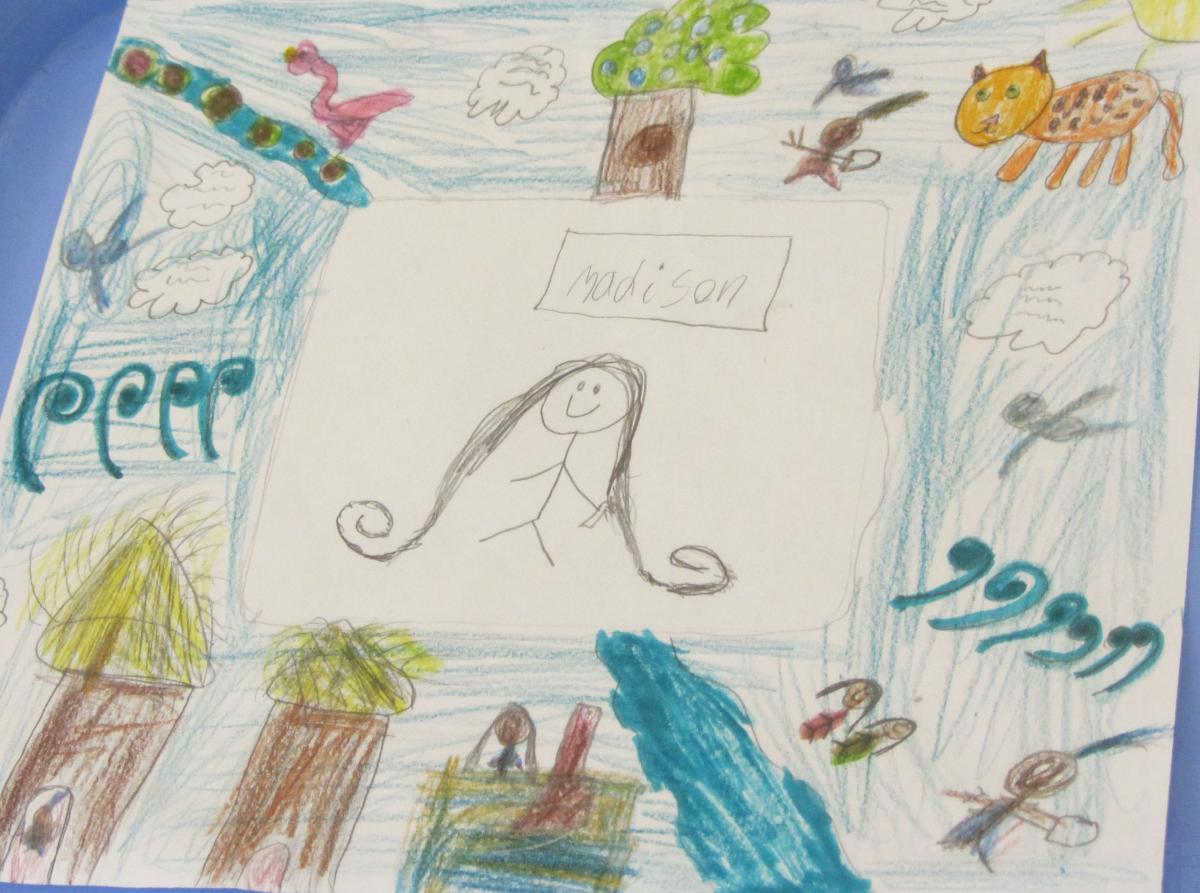 Fourth grade teacher Linda Pope says she was excited to learn that siblings in her class have a grandfather born and raised in Madagascar who was willing to come and talk about his homeland and share his experiences with the students.
Fourth grade teacher Linda Pope says she was excited to learn that siblings in her class have a grandfather born and raised in Madagascar who was willing to come and talk about his homeland and share his experiences with the students.  Iconic, indigenous lemurs are the focus of fourth grade’s art; and they are creating beautiful collage-pieced ‘lemur portraits.’
Iconic, indigenous lemurs are the focus of fourth grade’s art; and they are creating beautiful collage-pieced ‘lemur portraits.’  Heinrich teaches art to the fifth graders and for Cultural Awareness students looked at hand-printed fabrics from West Africa and incorporated the traditional ‘Adinkra’ symbols into their own designs, which were etched onto a plate and used to make prints. Students will perform a song in the Yoruba language, “L’abe igi orombo” or ‘Under the Orange Tree,’ about children gathering under an orange tree to play together.
Heinrich teaches art to the fifth graders and for Cultural Awareness students looked at hand-printed fabrics from West Africa and incorporated the traditional ‘Adinkra’ symbols into their own designs, which were etched onto a plate and used to make prints. Students will perform a song in the Yoruba language, “L’abe igi orombo” or ‘Under the Orange Tree,’ about children gathering under an orange tree to play together.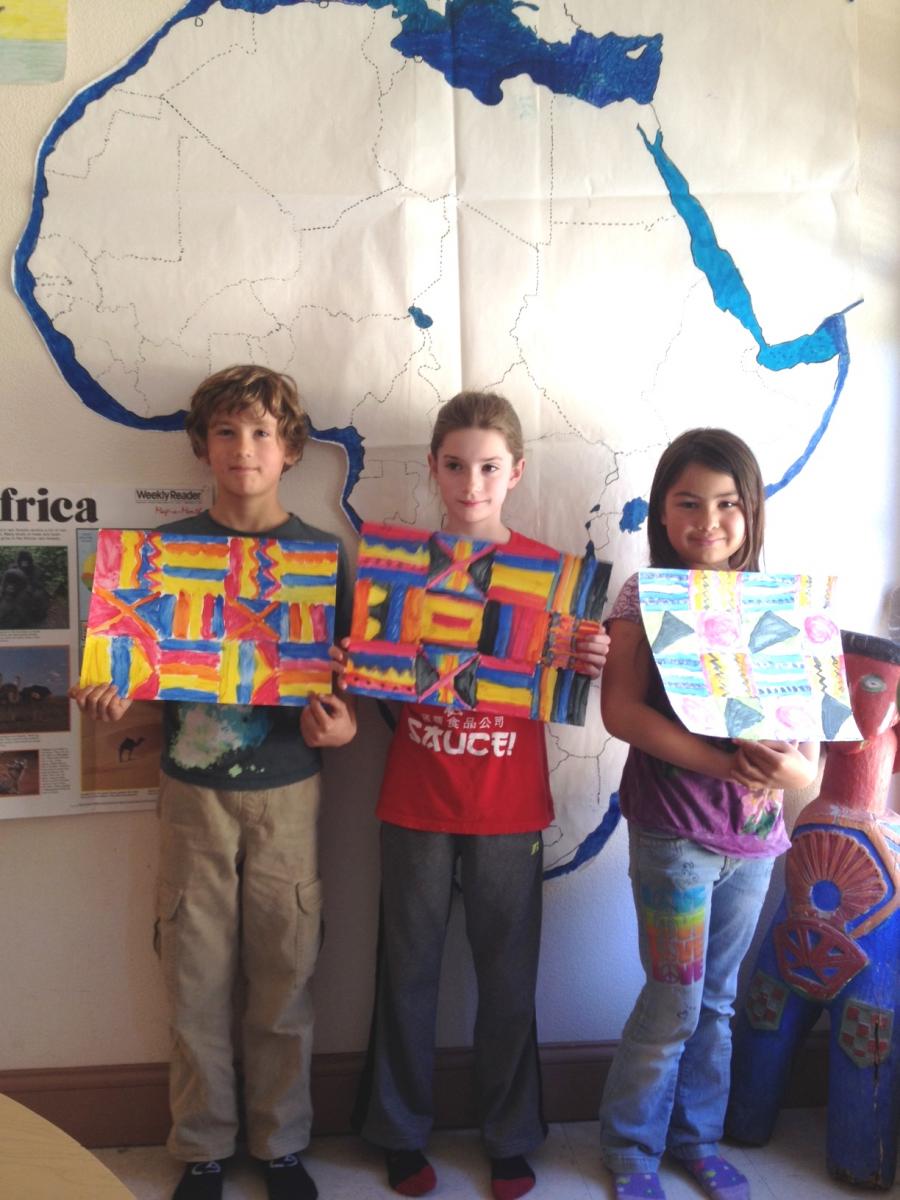 As a finale, first through fifth grade students will be joined onstage by MMS eleventh grade students to sing ‘Shosholoza,’ a traditional South African freedom song. The eleventh graders are learning the song to share with others during their learning journey to South Africa this summer.
As a finale, first through fifth grade students will be joined onstage by MMS eleventh grade students to sing ‘Shosholoza,’ a traditional South African freedom song. The eleventh graders are learning the song to share with others during their learning journey to South Africa this summer.